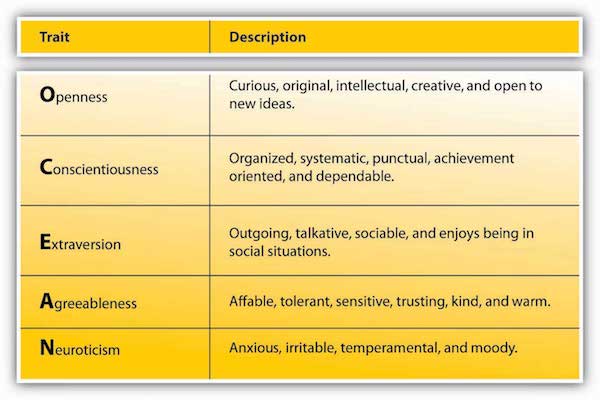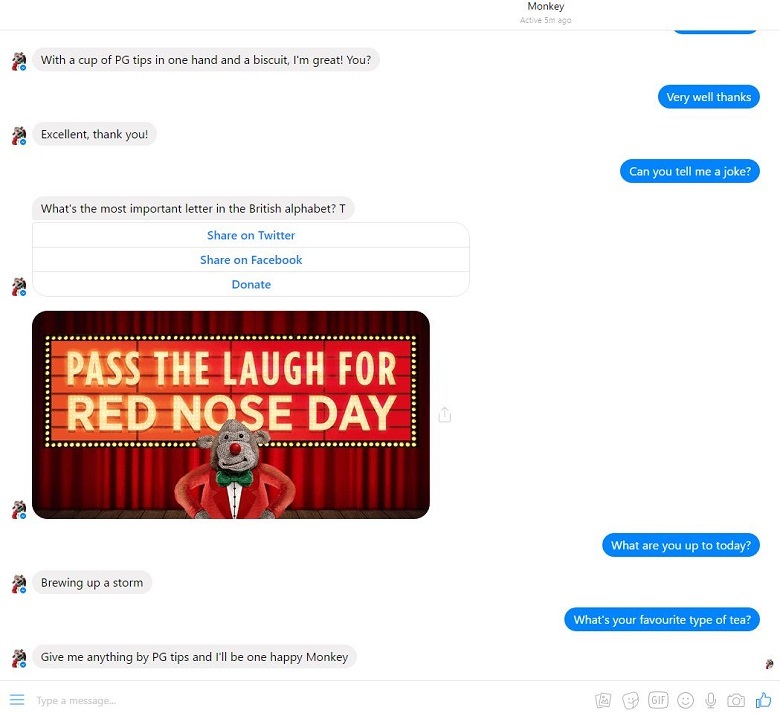How to Craft a Chatbot Personality (Without Damaging its Performance)

'If only I had a heart.' - Tin Woodman
Today, we will cover a topic at the heart (pun intended) of this technology: chatbot personality.
Should a robot have a personality? Should the Tinman get a heart? Do users care? Do we even have the power to build a personality around a chatbot?
From branding to UX, I will aim to answer all these questions below.
Chatbot history: personality, you say?
Our most avid readers know chatbots are actually nothing new. Heck, we have been building them for the better part of the last 12 years.
If you have gone through our chatbot history guide, you know humans started building speaking robots as far back as the 1950s.
So, has chatbot personality had any place in the last 60 odd years?
It had. In fact, one of the most prominent chatbots ever created, SmarterChild (which we also mention in the guide), had a strong personality. Its personality was an intricate part of what SmarterChild was.
Its creator, Robert Hoffer, said:
Our goal was to make a bot people would actually use, and to do that we had to make the best friend on the Internet.
To do that, SmarterChild had to have a personality. It couldn't just give robotic answers to factual questions about stock prices or the weather in Mexico. Think you can insult a robot without repercussions? Think again! SmarterChild would stop answering your questions until you've apologised. It was funny, sad, snarky, sarcastic -- sort of human.

SmarterChild getting annoyed (year 2000 quality screenshot!)
Clearly, this pleased a lot of people. SmarterChild used to speak to up to 250,000 humans every day. This may not seem like much but in the year 2000 that was a whole lot of daily users (I barely had the internet back then).
This all happened many years ago. So where are we now? Are we forging a personality into every new chatbot; a snarky, sarcastic, funny, many-years-later-developed chatbot personality?
Sometimes, but not always. And here's why.
Performance over personality
We write about this quite a lot. When it comes to chatbots, I am a big advocate of performance over quality.
The idea is simple: when using a chatbot for a specific task, I want the task to get done, period. I don't want fluff, I don't want funny, I don't want smart; I want it done.
This isn't just me, either. Our latest research showed consumers want efficiency over fun from chatbots.
69% of consumers would speak to a chatbot to get instant answers, whereas only 15% would use it for the fun of it. Clearly, performance is more important than fun.
Does this mean our chatbots are never fun? Absolutely not. When we built Unilever' Monkey chatbot, it was pretty much all just fun.
Unfortunately, this type of behaviour does not suit every chatbot. Most of the builds we take on do not fit the 'fun' chatbot description. They are useful, performing chatbots that take on a very important role in an organisation.
As an example, let's look at this conversation between Poncho (a weather chatbot) and a user.

Poncho avoiding the tough questions
Thought Poncho does a great job at reverting back to the user, handle the inputs it doesn't understand, and ask for rephrasing, none of this would fly in an internal HR chatbot.
Imagine asking about your maternity leave policies and being faced with snarky comments or vague diversions. Obviously, would not work.
What happened, then?
I think the difference between SmarterChild in 2000 and the chatbots we now build many years later is usefulness. Today, we are not trying to push the boundaries of tech by building something cool. Today, we have the technology to build something that can actually change the lives we live.
Hence the need for the bots we build to be performant over fun. Fun will come. Intricate personalities in chatbots are in fact already happening. Think Gatebox.
This robot/hologram has a distinct personality which you can amuse, irritate, anger, and more. This is the future of chatbots as well.
For now, though, I would urge any business to develop a chatbot that has a high performance rate rather than a complex personality.
Think of your chatbot's one true goal -- that is what it needs to do. The rest is extra.
Forging your chatbot personality
Now we are all caught up on the history and we have our priorities straight, we can get to the cool stuff. Below, we are going to look at the two-step approach we like to take to implement a personality into a chatbot.
Phase one - The low hanging fruit
Ha, low hanging fruits. We all love 'em. Easy pickings, easy rewards.
When it comes to building your business chatbot's personality, the low hanging fruit is your company branding.
As a company, you most likely have taken the time to build branding guidelines. You've discussed colours, logo, all of that good design stuff. You also most likely discussed your tone of voice, a little bit of language, some of the sentences or words you use when speaking to customers.
This is going to be super helpful to build your chatbot's personality. Take that as a starting point and build on it.
Think of your chatbot like your most important brand ambassador. Design it to suit that brand and represent it the best it can.
Phase two - Five-factor model of personality
Yup, we're going full academic now.
Human personality is defined by different degrees of five distinct character traits: extraversion, agreeableness, conscientiousness, neuroticism, and openness. Combine very specific variations of these characters and you get a unique human.
For example, a specific set of these factors are what make an extroverted individual more social and open rather than quiet and reserved.

A breakdown of the five factors (source).
What does all this matter? Because it turns out humans use the same parts of their brains to interact with robots as they do other humans (read more in this MIT Press study). That's a clear case of anthropomorphism if I ever saw one!
So, the five-factor model (FFM) will help you define your chatbot's personality on a granular level. In phase two of forging its personality, you should map out each of your chatbot's states (normal, angry, happy, discontent, annoyed, etc.) using the FFM as a reference.
- How does your chatbot act when it is neutral?
- Is it introverted?
- Is it outgoing?
- Is it friendly?
First, define its personality in simple, neutral situations. Then, start mapping out the interactions it is expected to encounter and define how its personality should change accordingly.
Say your chatbot is frequently interacting with users who are in a desperate financial situation. How will its personality be affected by an interaction with such individual? Should it remain neutral or become more compassionate? If it does adopt a more compassionate behaviour, how does that translate in the words it uses?
I'm not going to lie, this is advanced stuff. I wanted to share this with you so you can see what is possible and what you should, ideally, plan for at some point in the future for your chatbot.
Testing and tweaking your chatbot's personality
Here comes the part where I tell you the obvious: you are not going to get it right the first time.
Testing and tweaking your chatbot's personality will become a routine procedure.
When you release an AI chatbot into the wild, you expect to have to train its knowledge over time, right? The same applies for personality.
When you do your weekly log/performance reviews, allocate time for personality and character. Has our chatbot answered in the right tone? Did any user get angry or frustrated due to poor personality switching?
Coordinate with your chatbot development company to make sure they make the proper adjustments.
Personality showcase: Rose, the Cosmopolitan chatbot
After a stern warning (performance over personality) and a bit of theory, let's showcase a chatbot that got it right.
The Cosmopolitan in Las Vegas is well-known for its exclusive feel. Like most hotels of their standard, their ultimate goal is simple: get guests to book another stay with them directly.
To achieve this, they know they need to deliver a fantastic experience to each and every guest. They already achieve this feat day to day with customers who physically engage with the staff, but what about all the people that never talk to their humans?
To solve this problem at scale, the Cosmopolitan turned to chatbot technology. Meet Rose, the Cosmopolitan's very own chatbot concierge.
Rose is a perfect example of a chatbot built with personality in mind.
Sure, its ultimate goal is to generate more revenue (which it did, guests who engaged with Rose spent 30% more than others), more direct booking (which it did, 11% of guests who engaged with Rose returned to the Cosmopolitan, and 43% of those booked directly).
But to achieve these results, Rose had to be the Cosmopolitan. Engaging with it had to feel like engaging with the staff. It had to feel exclusive. It had to create a personality that fits the vibe of the hotel and the experience of staying in it.

(Source)
Suffice to say, Rose achieved its goal -- and personality had a great deal to do with its success.
This is a great example of a chatbot ticking the three boxes above:
- Performance over personality. Though Rose has a great dose of personality, it doesn't miss the real goal: providing guests with exclusive and relevant information to make their Vegas experience incredible.
- Low-hanging fruit: Rose is directly inspired by the experience The Cosmopolitan in Las Vegas give their guests.
- FFM: Once the baseline was put together, it's clear Rose's personality was improved using the FFM (or a similar framework). If you look back at the description of the five factors in the image above, you could almost plot its personality perfectly.
Conclusion
Your chatbot may become your most important brand ambassador.
Once your chatbot's primary business goal is achieved, take a dive into its personality. The easiest way into this is to look at your brand first. Take your brand as a starting point and develop your chatbot's unique personality.
Some will advise you to build completely whacky personalities with complex history backgrounds and quirks straight away.
'That's what gets the PR', they say.
I say wait, young Padawan. First, solve your business challenge. Then, pick the low-hanging fruit (brand). Then, use the FFM framework above to refine your chatbot's personality over time.
A well-crafted, successful, personable and unique chatbot is incredibly fun and efficient. It's worth spending the time to get there properly.













